I was introduced to falafel for the first time by visiting the ubiquitous Doner Kabob stands as a poor college student when I studied and traveled abroad in Europe. A doner kabob is a traditional Turkish dish in which a large piece of meat is cooked on a vertical rotisserie, the meat of which is used to fill a gyro. Although gyros are typically filled with lamb, beef, chicken, I came to love the vegetarian version, which is filled with falafel.

Gyro, filled with homemade baked falafel, cucumbers, tomatoes, and feta cheese
Falafel is a middle-eastern dish made from ground chickpeas (some call them garbanzo beans) or fava beans which are rolled into balls and fried. They are served inside gyros or beside cucumber salad. Falafel is healthy, cheap, and so delicious. It’s a win-win-win.
The chickpeas in falafel serve as a great source of vegetarian protein, but as you may know, they also contain carbohydrates. Beans, including chickpeas, are one of four major starchy veggies (the others are corn, peas, and potatoes).
Yes, that’s right: I’m promoting eating starchy vegetables. Despite their recent bad press and the popularity of extreme low-carb diets such as the Ketogenic Diet, carbohydrates are not evil.

Falafel ingredients, including delicious chickpeas!
BLCD (Before Low-Carb Diets)
The case against carbohydrates began in the late 1980s when research began to link high-fat diets to the increase in heart disease in America. Although subsequent research found the type of fat rather than fat in general was the cause of this link, the market responded to the demonetization of fat accordingly. Snack cakes and candy across America started boasting “low-fat” on their labels.
However, to replace the flavor lost when taking out the fat, the manufacturers added extra sugar. Thus, America swung from one extreme to the other, and instead of over-indulging on fat, our country began to over-indulge in sugar.
Fat-free hard candy and gummy bears.
Low-fat cookies.
Fat-free pretzels.
Those sound like sources of quality carbohydrates, right? (Just kidding. They’re not.)
Pendulum Swing

Because fat was declared evil, America started increasing the amount of carbs in her diet. Unfortunately, most of these carbs came from the aforementioned refined grains and sugar. And guess what? Eating a bunch of white bread and fat-free licorice isn’t very good for you. And doing so made rates of obesity, diabetes, and heart disease climb even higher.
A few years ago Time Magazine ran the news article, “Ending the War on Fat” which highlights the fallacy of all low-fat diets being good for you. Although we’ve known this for a long time – that eating a low-fat diet shouldn’t give you liberty to eat all the sugar you want – the media took this to the extreme.
Thus began the new war on carbohydrates. Instead of cutting back on refined carbohydrates, American started eliminating all carbohydrates (see: Ketogenic Diet). Instead of improving our health by focusing on quality food, our national eating disorder only worsened.
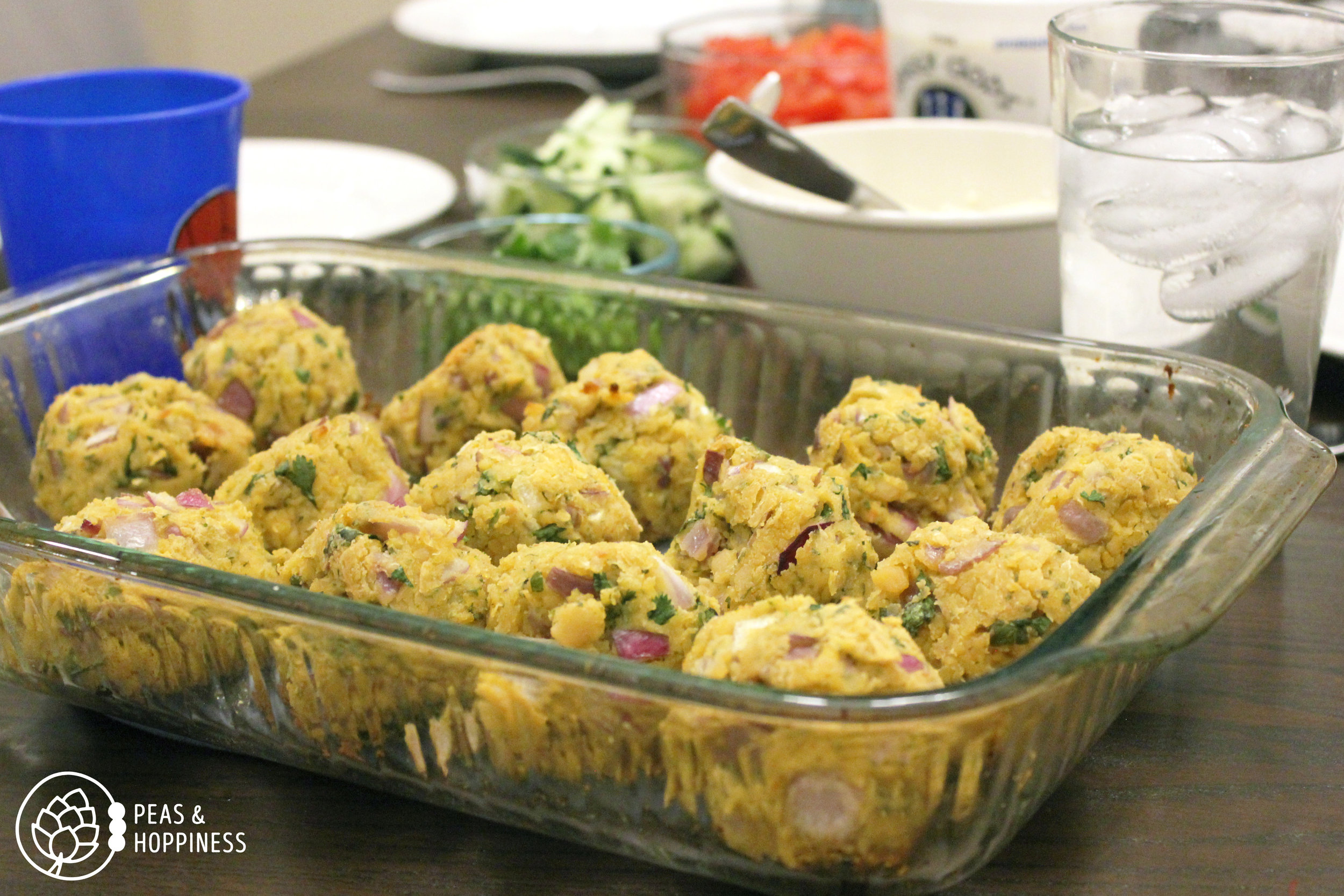
Mouthwatering Baked Falafel, fresh out of the oven!
Finding the Balance: the Marriage of Fat & Carbs
Now the pendulum has swung the other way and instead of avoiding fat, the new trend is to avoid carbs. In actuality neither of these extremes is particularly balanced.
>
“Eat food. Not too much. Mostly plants.”
Spoiler alert: there is not one evil food (or food group) which you should avoid at all costs and which doing so will give you eternal health. Some types of carbs and fat are really good for you while other, less healthy kinds, should be enjoyed in moderation (see: Soul Food).
The author Michael Pollen describes this balance beautifully and simply: Eat food. Not too much. Mostly plants.
It may seem boring; it may seem cliché, but moderation is the key to almost everything.
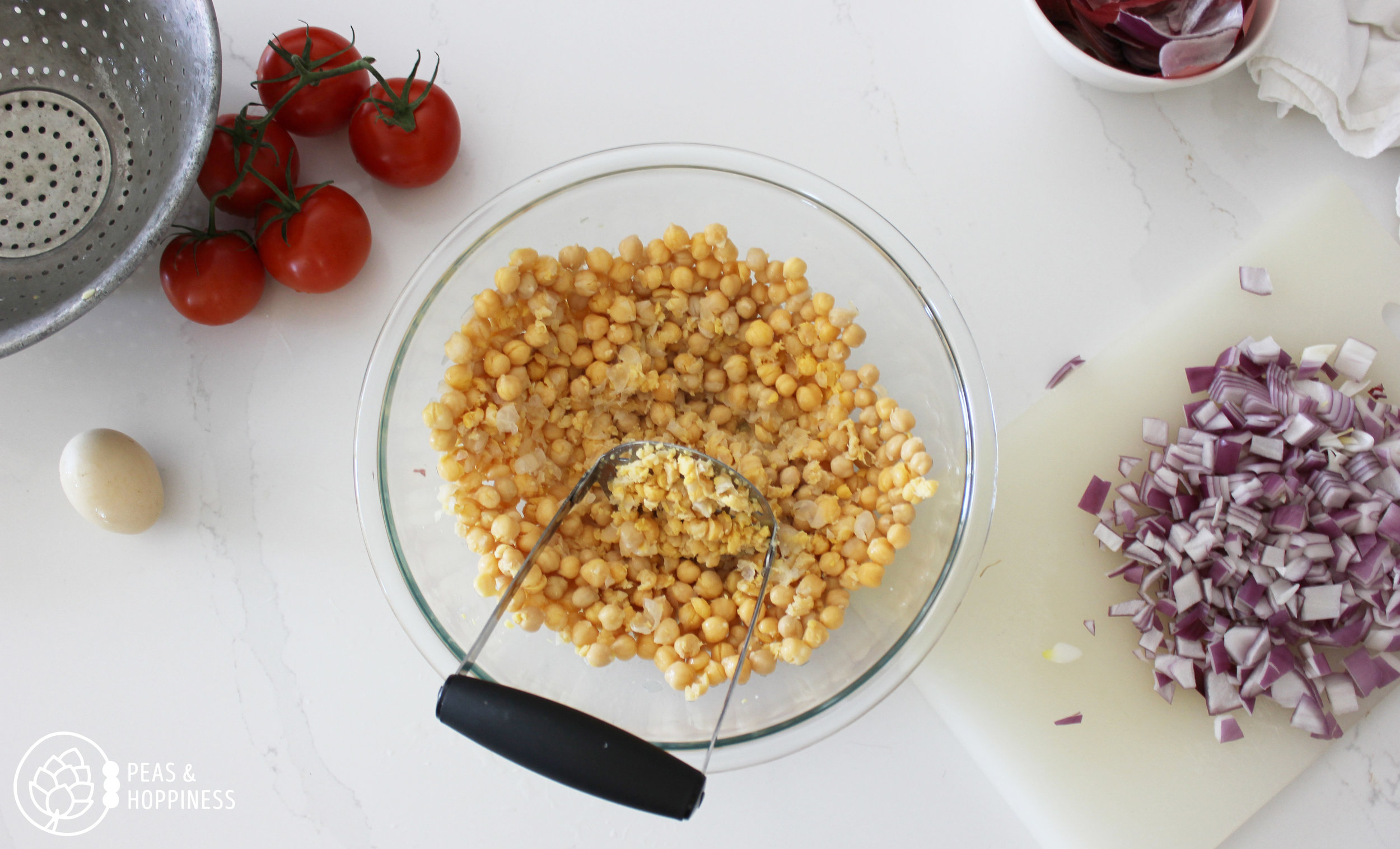
Instead of smashing chickpeas by hand, throw everything into a food process and blend until fairly smooth, but okay to still have some chunks of chickpeas
To celebrate the marriage of protein + carbs + healthy fat, I encourage you to try your hand at this easier-than-it looks recipe for baked falafel. Although falafel is traditionally fried, I’ve found this makes a mess in the kitchen. Baking the falafel is so much easier and can be done ahead of time, making it a little easier to plan meals! Truth be told, I’m using the term “baked” rather loosely; I add a substantial amount of oil to the dish before baking, so this isn’t necessarily low-fat (because, ahem, we’re working on moderation).
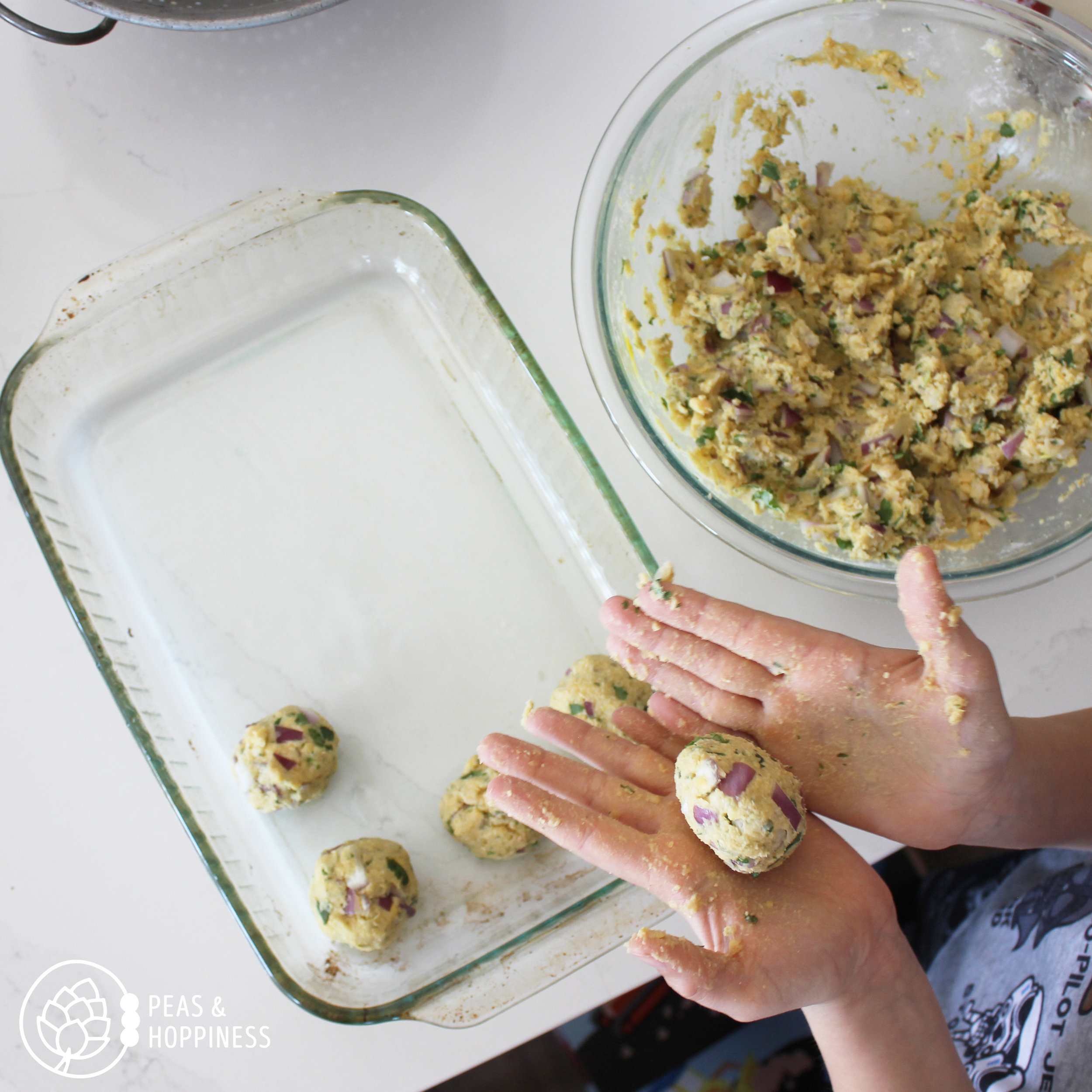
Mince one small red onion and 2-3 cloves of garlic and set aside. Drain and rinse three cans of chickpeas and add to a large mixing bowl. Using a potato masher, smash chickpeas into a thick paste with some chickpea pieces remaining.
Roughly chop a fourth-cup each of parsley and cilantro and add to chickpeas. Add onion, garlic, and remaining ingredients except for canola oil. Continue to use potato masher to combine mixture.
Heat oven to 400 degrees and add canola oil to a 9 x 13-inch baking dish.
Using a spoon and hands, roll chickpea dough into 15 evenly-sized balls and arrange in baking dish, leaving space between each falafel. Bake, uncovered, 12-14 minutes until falafel starts to brown, then turn each falafel over and bake another 12-14 minutes.
Serve hot in pita bread with tomatoes and cucumber, over rice, or over Greek salad with tzatziki sauce or plain Greek yogurt.
Enjoy!
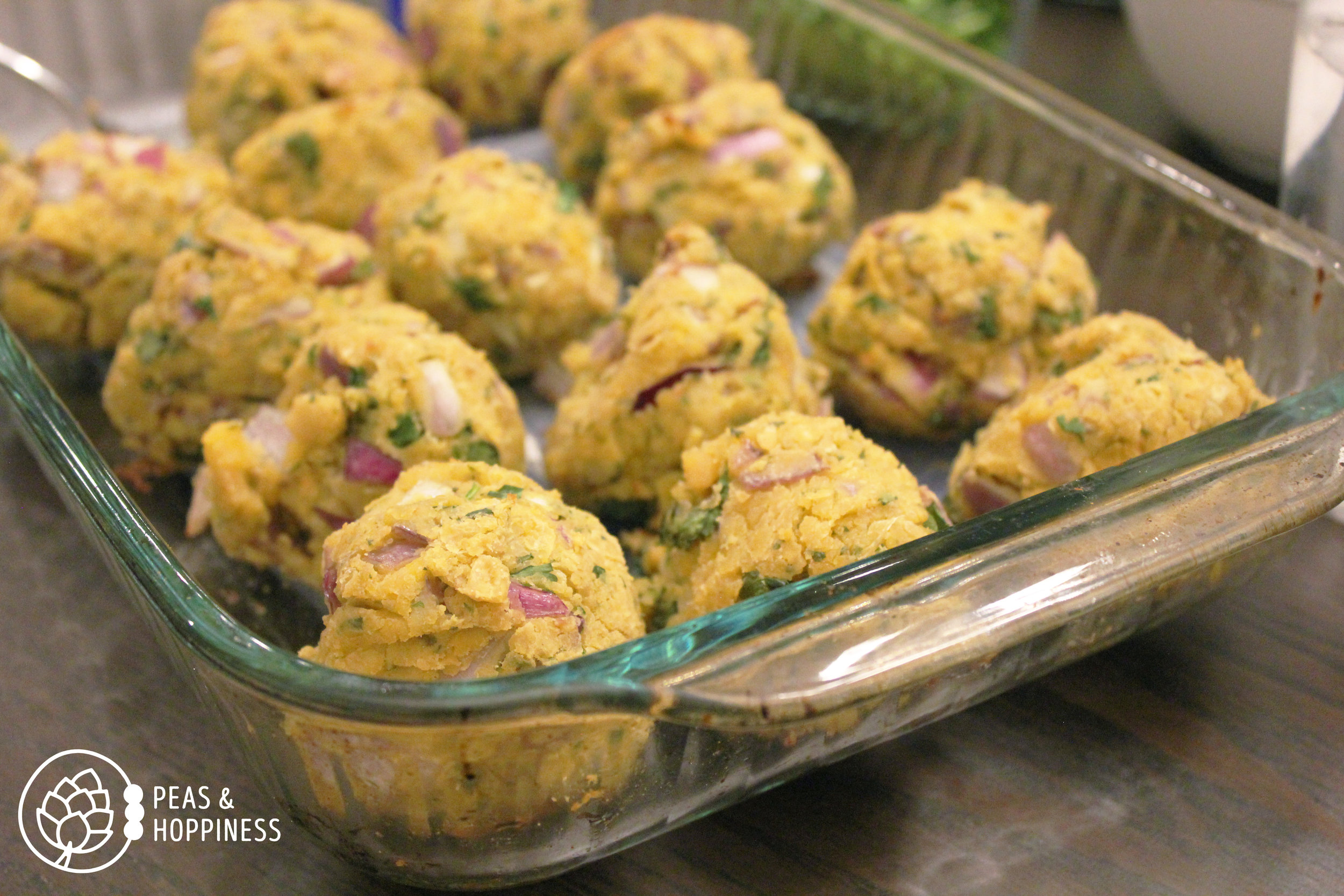
Baked Falafel
Ingredients
-
1 small red onion
-
1 tsp. minced garlic (2-3 cloves)
-
3 (14.5 oz.) cans chickpeas, no salt added (or about 5 cups cooked)
-
1/4 c. fresh chopped parsley
-
1/4 c. fresh chopped cilantro
-
2 tsp. cumin
-
1 egg
-
1 Tbsp. lemon juice (juice from 1/2 lemon)
-
1 tsp. salt
-
1/3 c. flour
-
1 1/2 tsp. baking powder
-
1/2 c. canola oil
Instructions
-
Mince onion and garlic and set aside.
-
Drain and rinse chickpeas and add to a large mixing bowl. Using a potato masher, smash chickpeas into a thick paste with some chickpea pieces remaining.
-
Roughly chop parsley and cilantro and add to chickpeas. Add onion, garlic, and remaining ingredients except for canola oil. Continue to use potato masher to combine mixture.
-
Heat oven to 400 degrees and add canola oil to a 9 x 13-inch baking dish.
-
Using a spoon and hands, roll chickpea dough into 15 evenly-sized balls and arrange in baking dish, leaving space between each falafel.
-
Bake, uncovered, 12-14 minutes until falafel starts to brown, then turn each falafel over and bake another 12-14 minutes.
-
Serve hot in pita bread with tomatoes and cucumbers, over rice, or over Greek salad with tzatziki sauce or plain Greek yogurt.
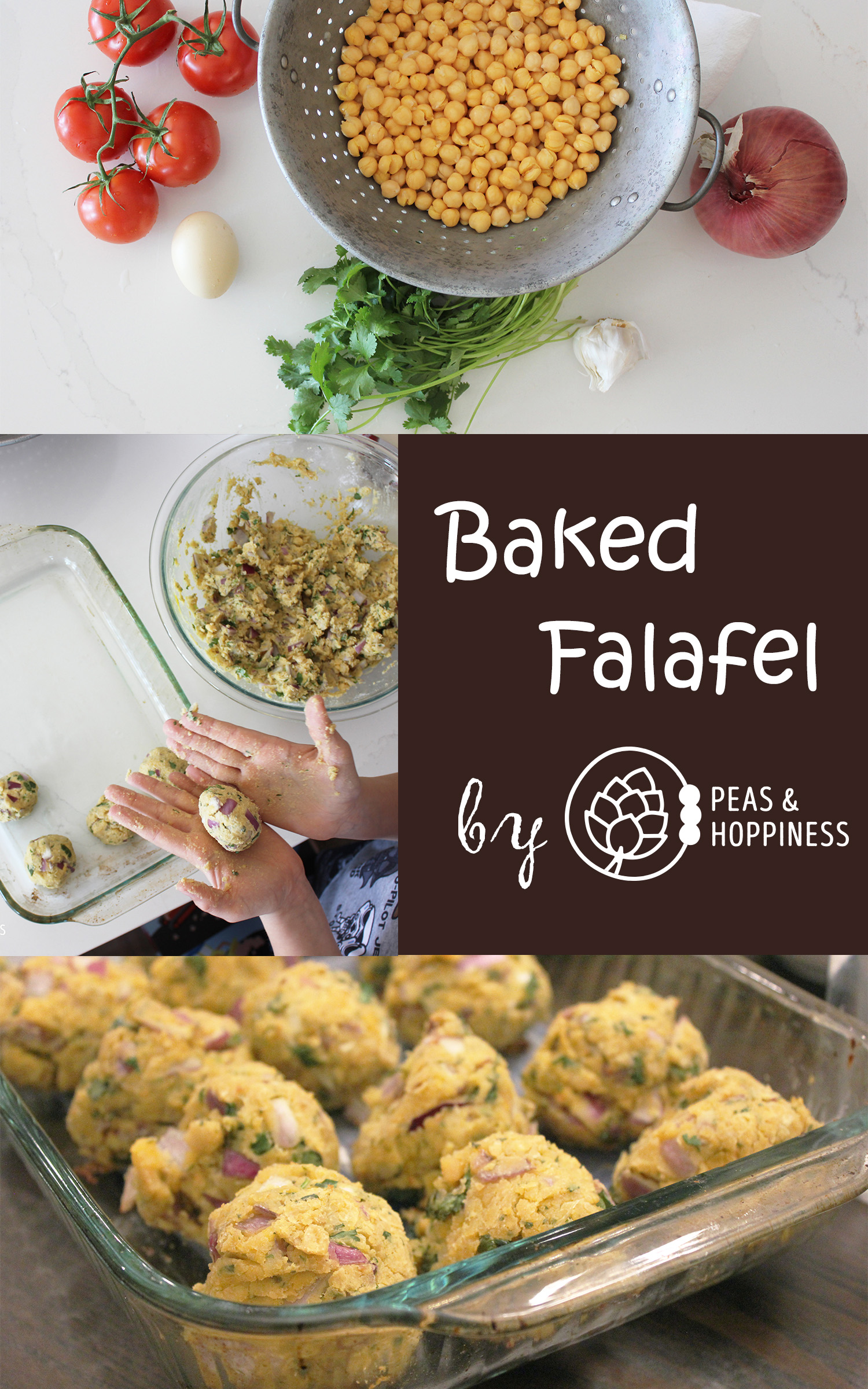
Cooking Techniques Used
-
Mince Onion: trim top and base off onion, then peel tough outer layers (usually top 1—2 layers). Slice in half lengthwise and lay the onion with the cut (flat) side face down. Slice the onion into very thin wedges, about 1/8-inch thick or less, then turn a quarter-turn and dice finely.
-
Mince Garlic: smash garlic clove by placing the flat edge of a chef’s knife on top of the clove and pressing firmly with the palm of the hand; remove papery skin. Lengthwise slice clove into very thin slices; stack slices on top of each other and cut into very thin matchsticks. Turn a quarter-turn and mince finely.
-
Roughly chop parsley and cilantro: cut leafy tops off stems (okay to include some stems) and chop into approximately 1/4-inch pieces.
Prep time: 25-30 min // Cook time: 25-30 min // Total time: 50-60 min – Serves 5 – Serving Size: 3 falafel – Nutrients per serving: 309 calories — 15g total fat — 1g saturated fat — 0g trans fat — 37mg cholesterol — 529mg sodium — 33g total carbohydrates — 8g fiber — 4g sugar — 12g protein — www.peasandhoppiness.com
Printable Recipe